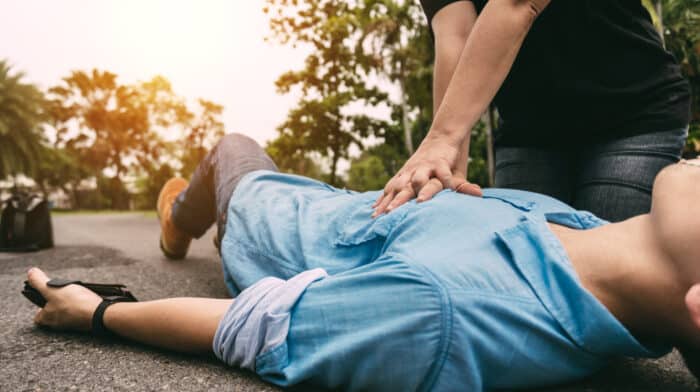How to do CPR
It’s scary to think about, but there may be a time when you’ll need to use CPR to save the life of someone you’re caring for. Cardiopulmonary resuscitation, most commonly known as CPR, is when you help a person’s heart move blood through their body when their heart has stopped.
In this video, we’ll review how to do CPR chest compressions on someone to help increase their chance of survival if their heart stops. This video is meant to be a reminder of the skills needed to perform CPR on an adult, but not a replacement for an accredited CPR course.
It’s scary to think about, but there may be a time when you’ll need to use CPR to save the life of someone you’re caring for.
Cardiopulmonary resuscitation, most commonly known as CPR, is when you help a person’s heart move blood through their body when their heart has stopped.
In this video, we’ll review how to do CPR chest compressions on someone to help increase their chance of survival if their heart stops.
This video is meant to be a reminder of the skills needed to perform CPR on an adult, but not a replacement for an accredited CPR course. See our care guide to find out how to sign up for one of these courses in your local area.
Let’s try it!
If you have found the person you’re caring for unconscious or not responding, call 911 immediately. If someone is with you, have them go call 911 and come back to let you know that 911 has been contacted.
The 911 operator will keep you on the phone and guide you through the CPR process until help arrives.
First, check to see if they are breathing by putting your hand or ear over their mouth or resting your hand lightly on their chest. If they are not responsive, but still breathing normally, do not begin CPR. Continue to check for breathing until paramedics arrive.
If they are not breathing or they stop breathing, prepare to begin chest compressions.
Make sure they are laying on a hard, flat surface. If they are on their bed, you will need to guide them to the floor. Do this by pulling their feet over the edge of the bed then supporting their head while sliding their body down to the floor.
Kneel beside them on the floor with your shoulders and upper body leaning forward over their chest.
Feel in the centre of their chest for their breastbone, a small bone at the base of where their ribs come together. Put the heel of your hand on the centre of their chest about two finger widths above their breastbone.
Interlock your fingers, straighten your arms and lock your shoulders and elbows.
Lean forward so that your shoulders are directly above their chest and press down hard using your whole upper body as leverage to compress their chest about 2-3 inches.
Do 30 compressions like this in a row, then stop and check to see if they’re breathing.
If they have started to breathe, you can stop compressions. If they are still not breathing, continue cycles of 30 compressions then check for breathing until the paramedics arrive.
Although most CPR courses teach compression-only CPR now, if you are comfortable, you can provide mouth to mouth rescue breathing. Do not perform mouth to mouth rescue breathing if you think that they stopped breathing because they are choking on an object.
Rescue breathing can push an object further into their airway and make it more difficult to get the object out.
To do rescue breaths, tilt their head back and lift their chin. Check their mouth for any foreign objects or vomit. If you see anything, tilt their head to the side, and using two fingers swipe their mouth clear of any objects. Wear disposable gloves for this if you have them on hand.
If you have a CPR mask available to you, put the mask on the person you’re resuscitating and while their head is still tilted, pinch their nose and put your mouth over theirs to create a seal.
Blow into their mouth while watching their chest to make sure it rises when you breathe in, so you can tell that air is going into their lungs. If air doesn’t go in, adjust their head tilt and try again.
If air still doesn’t go in, continue compressions without mouth to mouth.
If air does go in, give them two rescue breaths after every 30 chest compressions until they start breathing or paramedics arrive.
Giving someone CPR is scary. If you are able to save someone’s life by doing CPR, that’s amazing.
If you aren’t able to save them, know that you did everything you possibly could and try not to blame yourself.
No matter the outcome, take time after for yourself. It may be a good idea to talk about how you’re feeling with a trusted friend, spiritual leader or therapist.
For more videos like this, visit our Care Channel website!




